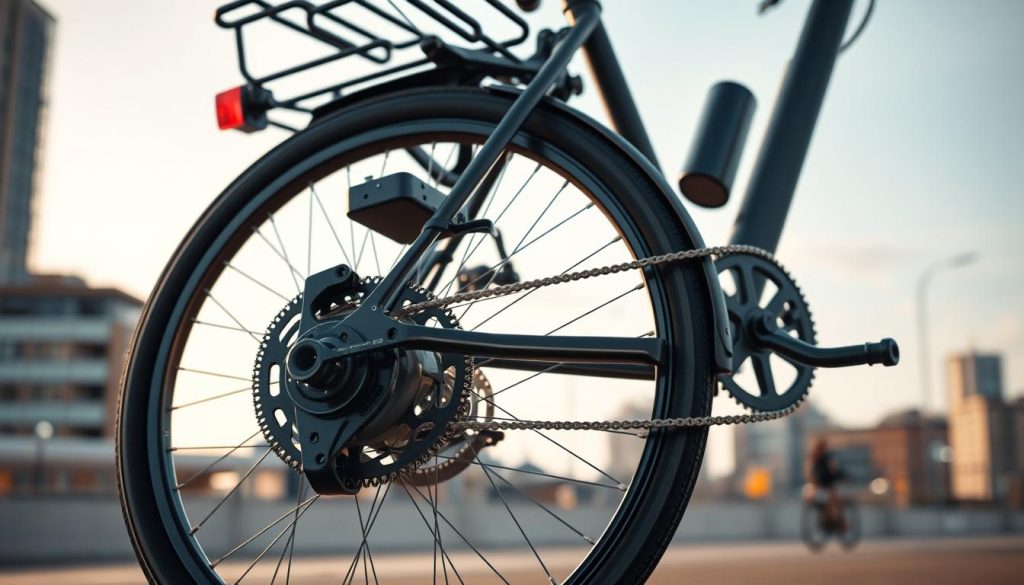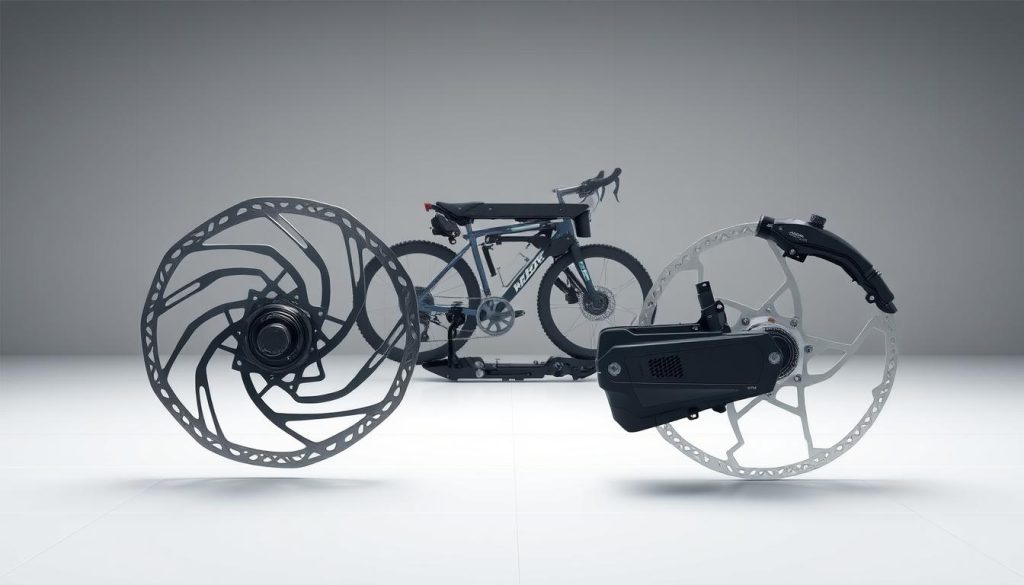Cycling fans and those who care about the planet are excited about a new way to travel. Regenerative braking bikes change how we see city rides. They make every trip a chance to make power.
These bikes turn lost energy from braking into electric power. It’s a new way to use the energy from moving. This means every pedal and brake helps the planet.
Cities in the U.S. are changing how we get around. Now, biking is better for the environment and cuts down on pollution. This tech is a big step towards cleaner travel.
Companies making electric bikes are always improving. They create systems that save energy and work better. These bikes show we care about our planet.
Understanding Regenerative Braking Bike Technology
Electric bike technology has changed how we move around cities. Regenerative braking is a key innovation in green cycling. It lets riders turn their bike’s motion into electric power when they slow down.
Electric bike brakes capture energy lost during braking. When you slow down or stop, the bike turns its motion into electrical charge for the battery.
How Energy Recovery Systems Work
Regenerative braking works by changing mechanical energy into electrical energy. It involves several steps:
- Detecting deceleration and braking pressure
- Engaging the bike’s electric motor as a generator
- Converting kinetic energy into electrical charge
- Storing recovered energy in the bike’s battery
Converting Kinetic Energy to Electric Power
The conversion of kinetic energy uses an electromagnetic process in the bike’s drivetrain. When the wheel slows down, the motor turns into a generator. This creates electrical current that can be used right away or saved for later.
Key Components of Regenerative Braking
Important parts for this technology include:
- High-efficiency electric motor
- Advanced battery management system
- Sophisticated energy conversion electronics
- Regenerative brake controller
Regenerative braking makes electric bikes more efficient and helps make cities greener.
Benefits of E-Bike Regenerative Braking for Urban Commuters

Urban commuters are finding a new way to make their rides better: e-bike regenerative braking. This tech lets you recharge your bike’s battery every time you stop or go downhill. It makes city cycling more efficient and eco-friendly.
This technology works by capturing energy lost during braking. When you slow down or go downhill, the bike’s motor turns into a generator. It converts the energy back into electrical power, which is stored in the battery.
- Extended Battery Range: Riders can add up to 10-15% extra range during typical urban commutes
- Reduced Charging Frequency: Less time plugged in, more time riding
- Lower Maintenance Costs: Less strain on battery components
- Enhanced Energy Efficiency: Turning potential waste into usable power
Urban cyclists save money and help the environment. They can save hundreds of dollars a year on charging. Plus, they help make transportation greener.
| Commute Scenario | Energy Recovered | Battery Range Increase |
|---|---|---|
| City Stop-and-Go Traffic | 5-8% | 10-12 miles |
| Downhill Sections | 10-15% | 15-20 miles |
| Mixed Urban Terrain | 7-12% | 12-18 miles |
By using e-bike regenerative braking, urban commuters are not just riding smarter. They’re helping create a more sustainable future, one ride at a time.
The Environmental Impact of Sustainable Cycling Technology
Sustainable cycling technology is changing how we move around cities. It’s making transportation greener. Regenerative braking bikes are key in cutting down carbon emissions.

These bikes do more than just take us places. They help reduce our carbon footprint. They make travel efficient and eco-friendly.
Reducing Carbon Footprint Through Energy Recovery
Regenerative braking turns lost energy into power. This green solution has big benefits:
- Converts kinetic energy into electric power during braking
- Reduces overall energy consumption
- Minimizes waste and promotes sustainable transportation
Sustainable Manufacturing Practices
Companies making these bikes focus on being green. They use recycled materials and efficient processes. They also make bikes that last a long time.
Long-term Environmental Benefits
Using regenerative braking bikes can cut down city pollution. By choosing these bikes, we help fight climate change. We also support greener cities.
Performance Comparison: Traditional vs Regenerative Brake Systems

Cycling fans are now interested in how traditional and regenerative brakes compare. Pedal-assist braking has changed how we stop and manage energy on electric bikes.
There are key differences between these brake systems:
- Stopping Power: Traditional brakes use friction, while regenerative brakes offer better control
- Energy Efficiency: Regenerative systems turn braking energy back into electrical charge
- Maintenance Requirements: Regenerative brakes wear less than traditional brakes
Riders using regenerative brakes see big improvements right away. The pedal-assist braking makes stopping smoother and helps save energy that’s lost with regular braking.
Studies show regenerative brakes have clear benefits:
| Brake System | Energy Recovery | Wear Rate | Overall Efficiency |
|---|---|---|---|
| Traditional Brakes | None | High | Low |
| Regenerative Brakes | Up to 15% | Low | High |
Electric bike makers are making regenerative braking even better. This makes eco-friendly bike brakes a great choice for those who care about the planet and want better performance.
Future Innovations in Eco-Friendly Bike Brakes
The world of green transportation is changing fast, with eco-friendly bike brakes leading the way. Scientists and engineers are working hard to create better regenerative braking systems. These systems aim to use energy more efficiently and perform better.
New materials like graphene and carbon nanotubes are making brakes lighter and more responsive. Companies like Trek and Specialized are spending a lot on research. They hope to improve how much energy is saved during braking, maybe up to 80%.
Smart technology is also making big strides in green transportation. New prototypes have advanced sensors and AI systems. These help improve braking, predict when parts need to be replaced, and show how much energy is saved in real-time through apps.
Electric bike makers are looking into new braking technologies. They want to mix electromagnetic and mechanical ways to capture energy. This could make city cycling greener, cutting down on carbon emissions and offering smarter, more efficient rides.

